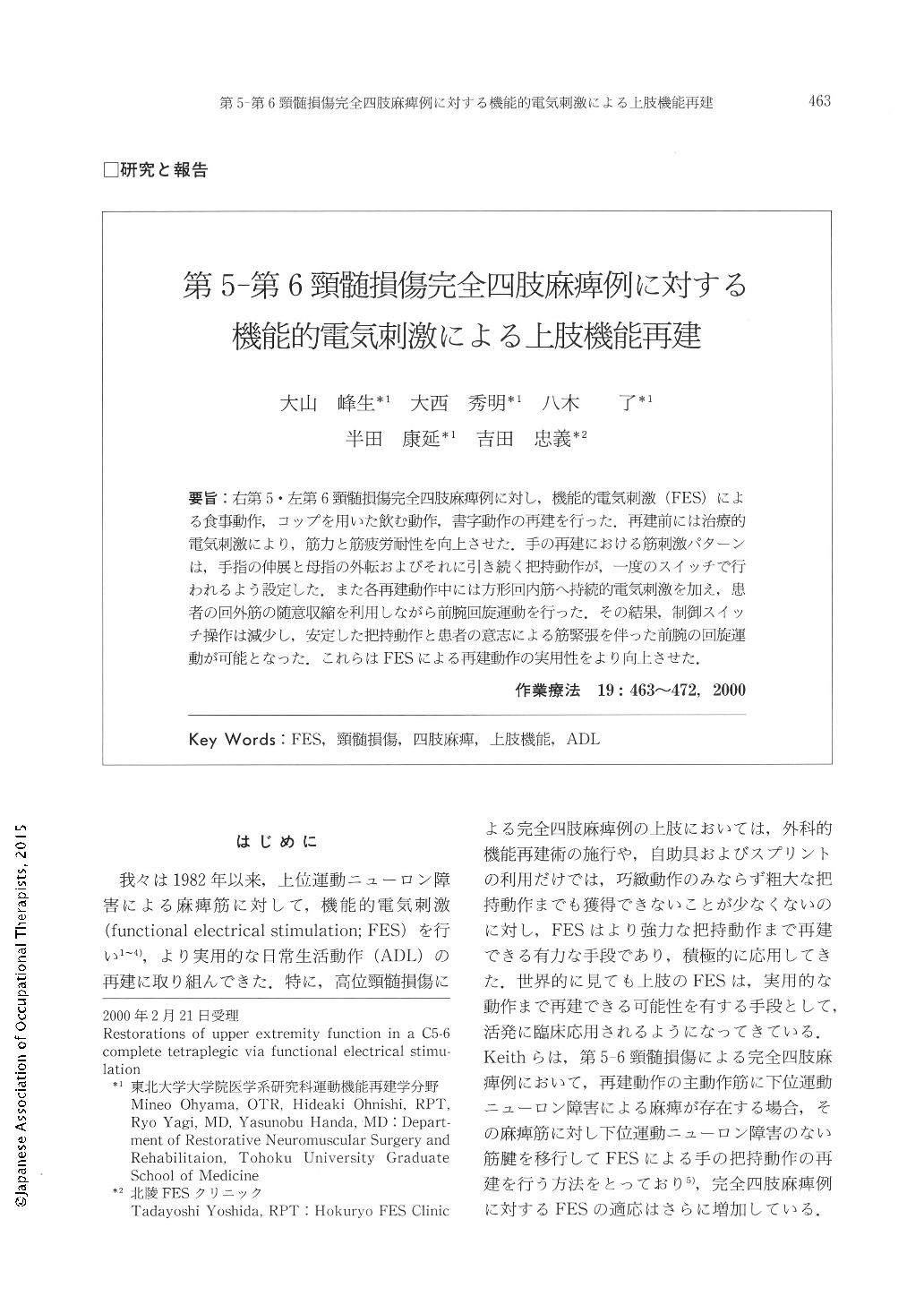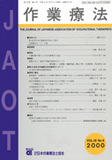Japanese
English
- 販売していません
- Abstract 文献概要
- 1ページ目 Look Inside
- 参考文献 Reference
要旨:右第5・左第6頸髄損傷完全四肢麻痺例に対し,機i能的電気刺激(FES)による食事動作,コップを用いた飲む動作,書字動作の再建を行った.再建前には治療的電気刺激により,筋力と筋疲労耐性を向上させた.手の再建における筋刺激パターンは,手指の伸展と母指の外転およびそれに引き続く把持動作が,一度のスイッチで行われるよう設定した.また各再建動作中には方形回内筋へ持続的電気刺激を加え,患者の回外筋の随意収縮を利用しながら前腕回旋運動を行った.その結果,制御スイッチ操作は減少し,安定した把持動作と患者の意志による筋緊張を伴った前腕の回旋運動が可能となった.これらはFESによる再建動作の実用性をより向上させた.
This Paper describes restoration of upper extremity function in a C6A quadriplegic using functional electrical stimulation (FES). In this patient, pronation of the forearm was required for achieving hand tasks provided by the FES-controlled grasp. To realize volitional control for rotation of the forearm without applying control command of FES for pronation, the percutaneous intramuscular electrode was implanted in the pronator quadratus, for which the sustained electrical stimulation (bias-FES) was applied. He performed in order to rotate the forearm with a combination of volitional supination and a continuous contraction of the paralyzed pronator quadratus that was activated with bias-FES. As a result, he could achieve the feeding, drinking and writing with volitional forearm rotation via bias FES. For evaluation of the effect of the bias-FES, we analyzed the abduction angle of the shoulder joint and rotation angle of the forearm during the feeding with only self-care devices and those during FES-controlled feeding by a three-dimensional motion analyzer system. The FES-controlled feeding contributed to minimize shoulder abduction that was used for pronating the forearm during feeding with self-care devices. In the FES-controlled drinking, he could hold a cup tightly and drink a cup of water directly without a straw. In the FES-controlled writing, he could write smaller letters, which were easy to read because he could hold a pen tightly and his forearm could be stabilized on the desk in pronation. We concluded that bias-FES for the forearm rotation with hand tasks provided by the FES-controlled grasp was feasible and usuful.

Copyright © 2000, Japanese Association of Occupational Therapists. All rights reserved.


